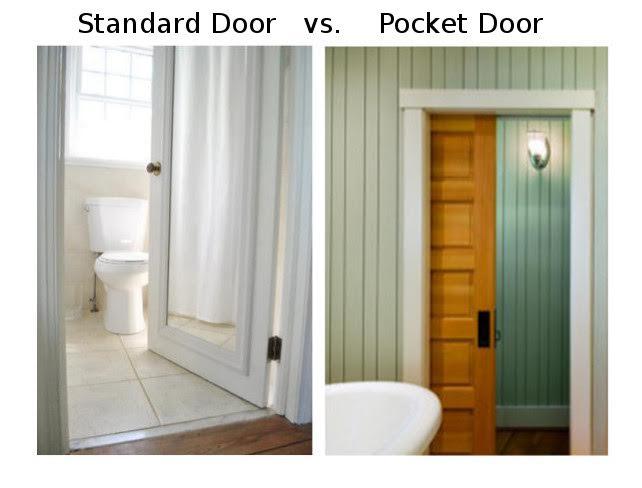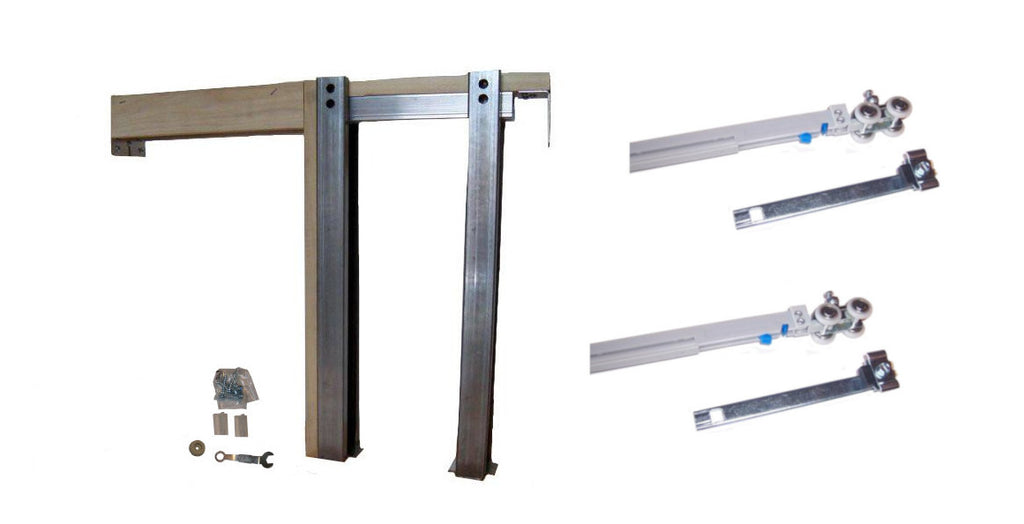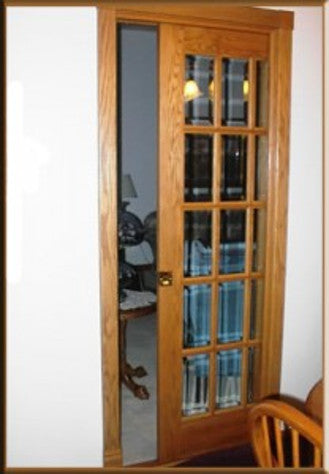News — Pocket Doors
Standard Door vs Pocket Door
Posted by Melissa Demarco-Seidle on

Pocket Door vs Standard Door Installing a Pocket Door is a better choice than a hinged door for tight spaces. You can save an average of 15 square feet per Pocket Door vs a Standard Swing Door. These space savings are even more important for a smaller home. Ten Pocket Doors would save 150 Square feet in your home. We high grade hardware for our Pocket Door Frame Kits. Our Pocket Door Frame Kits Features: Rectangular Steel Tubing Solid Hardwood Headers Galvanized Steel Floor Brackets 250 lb. 4- Wheel Ball Bearing Rollers Self Tapping Drywall Screws Hardwood nailing strips for...
2450 Series- Pocket Door Frame Kit for 2 x 4 Construction
Posted by Melissa Demarco-Seidle on

The 2450 Series Pocket Door Frame is designed to carry heavy solid core doors (up to 250lbs each) in standard 2 x 4 timber or steel framed stud walls. Features: Rectangular Steel Tubing Solid Hardwood Headers Galvanized Steel Floor Brackets Self Tapping Drywall Screws Hardwood nailing strips for jambs ** Our Frame Kits are the lowest price Frame Kit with all Steel Studs in the U.S. Available in: Single Pocket Door Kit Double Pocket Door Kit with Converging Door Kit. Also Available for our Kits: 4- Wheel Ball Bearing Soft Close included- Soft Close smoothly causes the door to...
What is a Pocket Door?
Posted by Ronald Seidle Jr on

A Pocket Door is merely a Door that slides into and out of a hollow cavity, or pocket, in a doorway wall. When opened, the door will disappear inside the space, hidden with the confines of the wall. Designed more than one hundred years ago as space savers, pocket doors became very pop in the Victorian Style homes of the late 1800 and 1900 hundreds. Used primarily as entrances to stately Libraries, Elaborate Dining areas, or even a basic Sitting Room, these dividers continued to increase in popularity until seemingly dropping completely from the architects planning boards. Much speculation surrounds...
